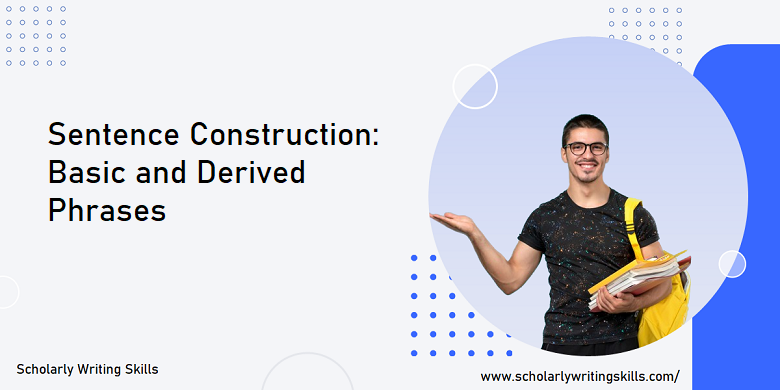There are two types of noun modifying elements which are commonly known as pre-modifiers and post modifiers. Pre-modifiers are adjective, noun, -ing, & -ed participles, and gerunds. The function of pre-modifiers in a noun phrase is to provide the initial descriptions or specifications for the head noun. In other words, these modifiers staying with the head noun help present its early compressed picture. Contrarily, post-modifiers (appositives, relative, infinitive and participial clauses, etc.) furnish the head noun with context, details, clarifications or explanations. In simple words, they broaden the meaning of the head noun by supplying more details or specifying its certain aspects. This post covers all these points in detail.
1. Adjectives
The function of adjectives is to provide descriptions and details for defining and developing the main idea carried by the head noun. For example, if the main idea of the head noun is struggle, the writer might use adjectives before it as “constant struggle,” “hard struggle,” etc. Particularly, adjectives are used to emphasize or highlight certain aspects of head noun in a phrase.
1.1 Adjectives in multiple pre-modification
Multiple pre-modification comprises derived nouns, participles and the possessive case. For example:
- this stingy and self-contained family, certain interesting stories, various other financial hardships
- the university’s most respected and recognized scholars, a constant high blood pressure, a vast grassy, bushy area, for a month or so (approximation)
1.2 Noun – Noun Sequence
When it comes to semantic relations that are realized through the noun + noun sequences, most of the pre-modifying nouns express the genitive relation (of-relation). For example:
- metal cylinders, body height, birth process, race duration
- weight gain (object relationship), a fur coat (source/composition)
The genitive relation means that if the noun-noun sequence is inverted, the preposition of appears in the phrase, e.g. metal cylinders turns into cylinders of metal.
1.3 Adjectives and nouns
These pre-modifiers have a great impact on the meaning of the head noun. Particularly, they can specify, restrict, or bring new tone (nuance) to the noun’s meaning. This impact can be there in the form of several semantic distinctions depending upon the modifier’s type and its relation with the head noun. Noun and adjective in the specification or restriction role, narrow down the possible referents of the head noun such as purple tree and mango tree. Herein, purple is an adjective and mango is a noun. Both these specify a particular tree from a larger set of trees. However, both the adjective (purple) and noun (mango) as modifiers specify or restrict certain set of trees on the basis of their different semantic differences. It means the adjective’s specification is characteristic based and that of the noun is material based.
Generally, it can be said that adjectives describe nouns in terms of their qualities and characteristics (e.g., cold wind, bitter experience, spacious lawn, etc.). On the other hand, nouns used as pre-modifiers indicate purpose (visa application), function (surgery implements), material (sugar use), or origin (Indian pottery)
In essence, the writers place pre-modifiers for adding specificity, detail, or a particular tone to the head noun. Further, their purpose is to communicate the aimed at meaning of the noun. Furthermore, it is to help the reader in interpreting the noun in terms of its true lexical semantics.
2. Modification Forms Occurring in Both Pre- and Post-positions
The -ing and –ed participles and gerunds are the realization forms that occur both as pre- and post – modifiers. Gerunds are mostly included in pre-modifying -ing-category. However, they serve as post-modifiers as well. In addition, the -ing participles while occurring in pre-modification position, operate as classifiers as well as evaluators. For example:
-ing participles as classifiers: flying birds, chirping birds, mating birds, opening session, free accessing facility
-ing participles as evaluative and qualifying meaning tools: a domineering position in the committee, the depressing environment of the workplace
When the ing- participle stays as a pre-modifier, its function is commonly to indicate semantic distinction. However, no such distinction appears when it stays as a post-modifier. For example:
- a special ceremony, opening a chain of events in connection with new academic year
- a hot discussion starting from human nature went on to …; the roof top painted in fast colours attracting the passersby
In example (a) opening is a pre-modifier and in (b) starting and attracting are post-modifiers.
3. Noun Modification by the ed-participle
The -ed-participles modify nouns both as pre-modifiers and post-modifiers.
- this heightened status his firm gave him last year
- the strictly imposed law
- a plan based on the previous experience
- the tall black man known in this area as a superman
Some of the pre-modifying -ed-participles express evaluative meaning by themselves as in (a) and others are modified in an evaluative manner in (b). The modifiers in (c) and (d) are post-modifiers.
4. Gerund and Gerund Phrase
A gerund can precede the head noun and function like an adjective. In this position, it specifies the type or purpose of the head noun, e.g. ‘sleeping time,’ ‘writing table,’ ‘challenging situation,’ etc. A gerund phrase is composed of a gerund and some accompanying words. Its function is that of a noun phrase and it can modify head noun, e.g., the building for accommodating refugees…. In this construction ‘accommodating refugees’ is a gerund phrase (noun phrase) and modifies the noun ‘building’.
5. An Appositive Phrase
An appositive is a descriptive phrase, or clause that follows the head noun and modifies it by renaming, explaining, or identifying. This it does by supplying additional information about the head noun. Hence, the head noun becomes clarified, specified, or elaborated. Renaming of the head noun with an appositive means that it stays as another name for the head noun. For example, in “My friend Aqeel is a specialist doctor,” ‘Aqeel’ is the appositive that renames the noun ‘doctor’. Further, an appositive provides more detail or context about the head noun. Thus it clarifies the head noun’s meaning by adding descriptive details. For instance, in “The Mount Everest top, the highest mountain top, has great attraction for mountain climbers”. In this construction, the appositive ‘the highest mountain top’ explains what sort of mountain top the Mount Everest top is.
6. Relative Clause
A relative clause as a modifier describes or identifies the head noun by providing it with additional information (i.e., characteristics or qualities). Further, a relative clause is initiated with a relative pronoun (who, whom, which, whose, that) or a relative adverb (when, where, why). Furthermore, a relative clause specifies which particular noun is being referred to and in this way narrows down the head noun’s meaning. In essence, the use of relative clause for the modification of a head noun enhances clarity and sophistication in writing.
An infinitive clause (to + a verb) plays the role of an adjective and pre & post-modifies the head noun in a noun phrase. This it does by providing the head noun with additional information (characteristics & more details). Particularly, this clause informs the reader about the head noun’s purpose or what was the writer’s intention or attitude for using it. For example:
- He purchased a water bottle to quench his thirst. [indicator of noun’s purpose]
- Aslam has to complete his writing assignment till this evening. [indicator of the noun’s nature]
- I have a colleague to share ideas with. [indicator of role or purpose]
These examples show that the infinitive phrase answers questions like what kind or what for about the head noun it modifies.
7. An Infinitive and Adverb as Forms of Post-modification
Infinitives and adverbs can stay as post modifiers of head noun. For example:
- it is not the indicator to be overlooked easily; nothing more further is to be said on this topic; no facts to be concealed;
- the buildings nearby; all available opportunities there
In academic prose mostly passive form of the infinitive is used as in examples (a). The use of this form is suggestive of formal text sorts.
In sum, this post presents an account of the categories of the pre and post-modifiers of head noun in noun phrase. The pre-modifiers are adjective, noun, -ing, -ed participles, & gerund. The role of this category of modifiers is to provide the head noun with its initial description and specification, thus narrowing down its meaning. The post-modifiers are appositives, relative, infinitive and participial clauses, etc. The function of these constructions is to supply context, details, or explanations for the head noun. This they do through providing additional information, context, or clarification. This post can help the writers in equipping themselves with the skills in constructing sentences which are prevalent in academic writing.
Sources Consulted
- Dušková (2009)
- Grammarly
- Scribber

